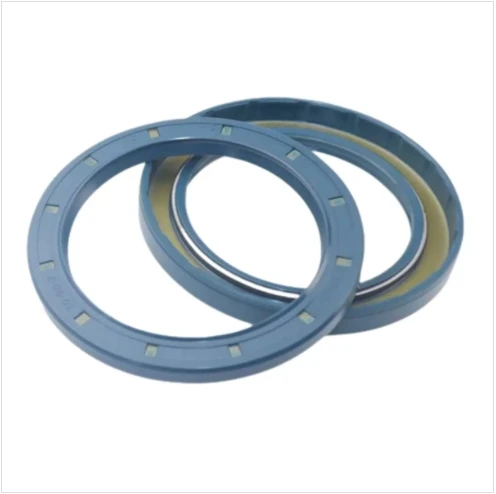gru . 30, 2024 01:32 Back to list
oil seal for pump
Understanding Oil Seals for Pumps Essential Components for Reliability
Oil seals, also known as lip seals or rotary seals, play a crucial role in the operation and longevity of pumps. These components are designed to prevent the leakage of lubricants, oils, or any other fluids while simultaneously blocking contaminants from entering the pump. Given the variety of pumps used across various industries—such as water, chemical, and hydraulic applications—understanding the significance and functionality of oil seals is essential for ensuring optimal performance and reliability.
What Are Oil Seals?
At their core, oil seals consist of an outer casing and a flexible lip made of elastomeric material, which is in contact with the rotating shaft. The design of the lip is critical as it creates a barrier against the fluids and contaminants while allowing the shaft to rotate smoothly. Oil seals are available in numerous sizes, shapes, and materials, tailored to meet the specific requirements of different pumping systems.
Importance of Oil Seals in Pumps
1. Leak Prevention One of the primary functions of an oil seal is to prevent the escape of lubricants from the pump. Fluid leaks not only reduce the efficiency of the pump but can also pose safety hazards and environmental concerns. In hydraulic applications, for instance, maintaining the proper level of hydraulic fluid is crucial for system functionality.
2. Contaminant Protection Oil seals also act as a barrier against dirt, dust, and other contaminants. If these particles infiltrate the pump, they can cause wear and damage to internal components, significantly impacting the pump's performance and lifespan.
3. Maintaining Pressure In many cases, oil seals help maintain the necessary pressure within the pump. This is particularly important for applications where consistent flow and pressure are critical for operational success.
4. Reduced Maintenance Costs By ensuring that oil seals function correctly, organizations can minimize maintenance and replacement costs. Regularly replacing worn or damaged oil seals can prevent more significant issues and costly repairs in the long run.
Material Selection for Oil Seals
oil seal for pump

The material used for oil seals depends on the specific application and the requirements of the pump. Common materials include
- Nitrile (NBR) Highly resistant to oil and suitable for a wide range of temperatures, making it a popular choice for many applications. - Fluoroelastomer (FKM) Offers superior resistance to high temperatures and aggressive chemicals, ideal for specialized applications. - Polyurethane Known for its durability and flexibility, it can be used in settings that require high abrasion resistance.
Choosing the right material is essential for ensuring that the oil seal can withstand the operational conditions of the pump without compromising its effectiveness.
Installation and Maintenance
Proper installation and maintenance of oil seals are vital for optimal performance. During installation, it is crucial to ensure that the seal is correctly aligned and seated to prevent premature failure. Additionally, regular inspections should be conducted to identify signs of wear or damage early. Factors such as the operating environment, temperature fluctuations, and fluid compatibility should be monitored closely to ensure the longevity of oil seals.
Future Trends in Oil Seal Technology
As technology evolves, oil seal designs are also advancing. Innovations such as new composite materials and improved manufacturing processes are leading to more durable and efficient seals. Additionally, the trend towards automation and smart monitoring systems may soon allow for real-time assessments of seal performance, enabling predictive maintenance and reducing downtime.
Conclusion
Oil seals are indispensable components in the functionality of pumps across various industries. By preventing leaks and protecting against contaminants, they not only enhance pump performance but also contribute to overall system reliability. Understanding the types, materials, and maintenance practices associated with oil seals can help engineers and operators optimize their pumping systems, ultimately leading to greater operational efficiency and reduced costs. As technology continues to advance, the future of oil seal development promises even greater reliability and performance in critical applications.
-
The Trans-formative Journey of Wheel Hub Oil Seals
NewsJun.06,2025
-
Graphene-Enhanced Oil Seals: Revolutionizing High-Pressure Oil Sealing
NewsJun.06,2025
-
Future of Hydraulic Sealing: Advanced Intelligent TCN Oil Seals
NewsJun.06,2025
-
Don’t Let a Broken TCV Oil Seal Ruin Your Day
NewsJun.06,2025
-
Bio-Inspired Dust Seals for Better Sealing Performance
NewsJun.06,2025
-
Biodegradable and Sustainable Hydraulic Seal Materials
NewsJun.06,2025
-
Top Oil Seal Solutions for Your Industrial Needs
NewsMay.22,2025
Products categories
















